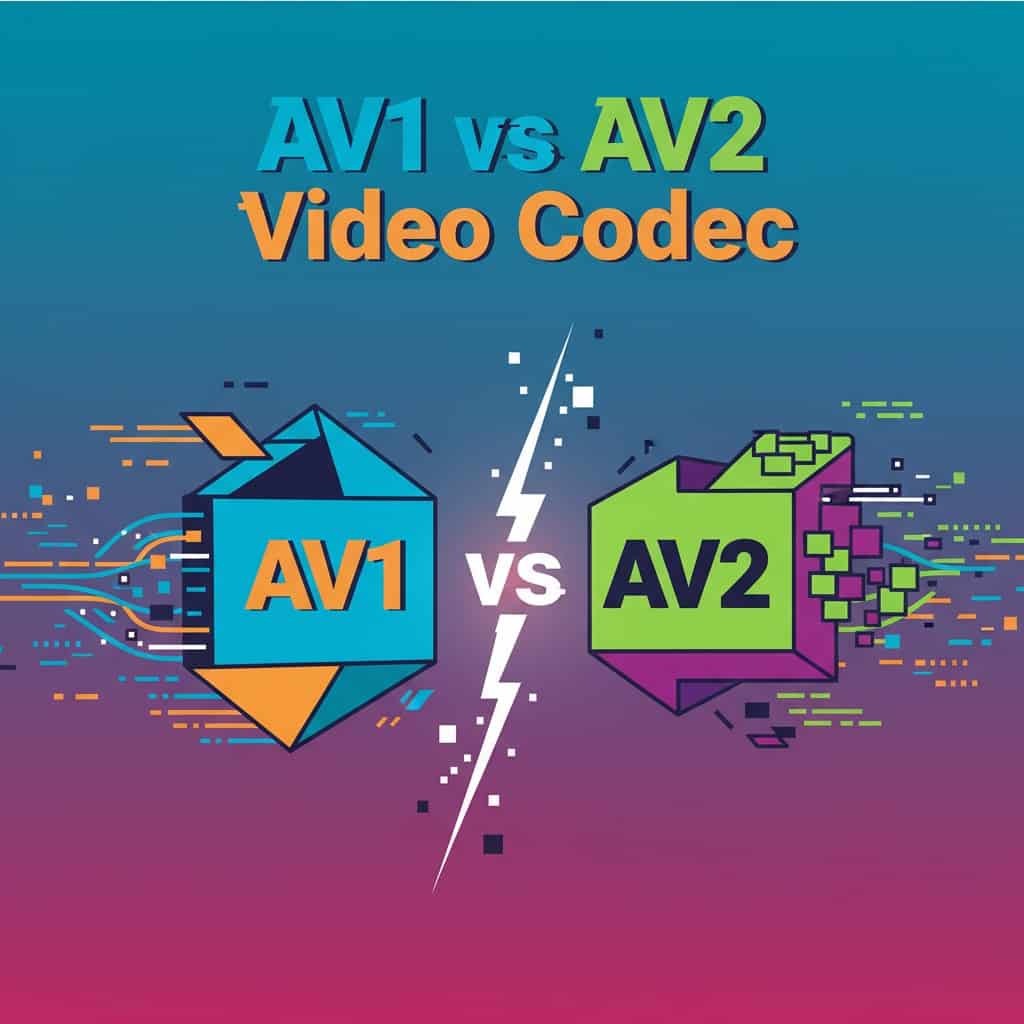Video streaming is a vital part of our daily lives, but how often do you find yourself frustrated by buffering or poor image quality? If that sounds familiar, you’re not alone. The introduction of AV2, a promising new video codec, aims to tackle these frustrations, boasting an impressive 30% increase in compression efficiency compared to its predecessor, AV1. This development could revolutionize how we experience streaming content, making it smoother and more visually appealing.
In this article, you’ll delve into the differences between AV1 and AV2, exploring their unique features, compression capabilities, and the implications for both content creators and viewers. Are you ready to uncover how these advancements may enhance your streaming experience? Let’s dive in!
Understanding Video Codecs: AV1 and AV2
Video codecs are essential in determining how we enjoy everything from online videos to full-length films. With AV1 currently leading the charge, AV2 is set to take video quality to new heights with its advanced encoding techniques.
What is AV1 and Why is it Important?
AV1 is a royalty-free and open-source video codec launched by AOMedia in 2018. It offers about 30% better compression than HEVC (H.265) and is favored by major platforms like Netflix and YouTube. This codec not only reduces file sizes but also enhances video quality through features such as film grain synthesis, making it a top choice for streaming services.
Most modern hardware supports AV1, including graphics cards from Intel, AMD, and NVIDIA, which helps ensure smooth playback across various devices. This codec has become crucial in the landscape of digital streaming, allowing users to enjoy high-quality video without hefty data costs.
What Makes AV2 Stand Out?
AV2 introduces several advancements that take video encoding to the next level. With its enhanced intra-frame prediction system, AV2 utilizes improved prediction modes and adaptive block partitioning, resulting in better video quality at lower bitrates. This is particularly beneficial for high-resolution content, enabling a more efficient streaming experience.
Additionally, AV2 supports frame-level multi-threading, allowing it to distribute encoding tasks across multiple CPU cores effectively. This capability, combined with dynamic bitrate switching, makes it an excellent choice for real-time applications such as live streaming and video conferencing.
Key Differences Between AV1 and AV2
The differences between AV1 and AV2 are significant and impact how you stream and watch content.
Compression Efficiency: AV1 vs. AV2
AV2 outperforms AV1 in compression, minimizing file sizes while retaining video quality. While AV1 already compresses considerably better than HEVC, AV2 goes a step further, making it ideal for high-resolution content, especially in scenarios requiring large bandwidth.
Video Quality and Bandwidth Considerations
AV2 excels in delivering superior video quality at reduced bitrates compared to AV1. Enhanced algorithms ensure that fast-moving scenes remain clear, and the support for HDR10+ allows for dynamic adjustments in brightness and contrast, improving the viewing experience on modern displays.
Moreover, AV2’s efficient compression significantly cuts down on bandwidth requirements, allowing you to stream high-quality content without excessive data usage. This is a game-changer, especially for mobile users who need to manage their data plans.
Encoding and Decoding Complexity
However, it’s worth noting that AV2 demands 2-3 times more computational power than AV1. This means that while you can expect better quality, you’ll need advanced hardware to fully leverage AV2’s capabilities. The need for powerful GPUs becomes crucial for both encoding and decoding AV2 content efficiently.
Advanced Features of AV2
AV2 comes packed with features that make it a formidable competitor in the codec arena.
Support for AR/VR Media
One of the standout features of AV2 is its advanced handling of AR and VR content. The codec’s ability to process 360-degree video streams efficiently makes it perfect for immersive media experiences, which require high-quality visuals and low latency to avoid discomfort.
Split-Screen Delivery
Another innovative feature is split-screen delivery, which allows users to stream multiple programs simultaneously on one display. Whether you’re watching a gaming tournament while keeping an eye on live commentary or attending a virtual conference, AV2 manages multiple streams without compromising quality.
Adaptive Streaming Capabilities
AV2’s adaptive streaming capabilities ensure smooth playback even in fluctuating network conditions. The codec dynamically adjusts the video quality based on available bandwidth, enhancing the viewing experience across devices and connection types.
Real-World Applications of AV1 and AV2
AV1 is widely utilized in platforms like YouTube and Netflix, where bandwidth efficiency is critical. Meanwhile, AV2 is poised to revolutionize emerging technologies, particularly in areas like AR/VR, cloud gaming, and live event broadcasting.
Why AV1 is Ideal for Streaming Platforms
AV1’s excellent compression rates make it the go-to choice for streaming services, allowing them to deliver high-quality content without overwhelming users’ data caps. This is particularly beneficial in regions with slower internet speeds, as it results in faster load times and a better overall user experience.
Emerging Scenarios for AV2 Adoption
AV2 is set to make its mark in high-demand environments where current codecs struggle. Think gaming platforms that require low latency for real-time streaming and AR/VR applications that need robust data handling for immersive experiences. The codec’s release is highly anticipated, especially for its potential in live sports broadcasting and interactive media.
Challenges Ahead for AV2
Despite its impressive features, transitioning to AV2 presents challenges, particularly regarding computational demands and hardware compatibility.
High Computational Requirements
The advanced features of AV2 come at a cost—higher computational needs can be daunting for current hardware. This means that users may need to upgrade their systems to fully harness AV2’s capabilities.
Infrastructure and Compatibility Issues
Additionally, existing devices may struggle to support AV2 without significant updates. As hardware manufacturers work on integrating AV2 support, users can expect a gap between the codec’s release and widespread adoption.
The Future of Video Codecs
AV2 is set to reshape the video streaming landscape by enhancing quality and efficiency. With anticipated official release by the end of 2025, the industry is gearing up for a transformative period in media consumption. As AV2 gains traction, you can expect a more seamless viewing experience, especially in high-resolution formats.
As you consider your streaming options, keep an eye on these developments. The future of video codecs is evolving rapidly, and staying informed will help you make the most of your viewing experience.




